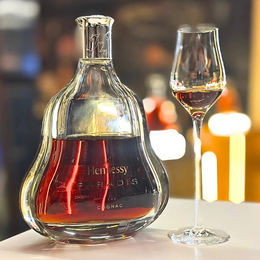Two Meads From Japan's Antelope (アンテロープ クラフトミード): Kumiko (久美子) & Ginger Cat 2

It might be rather surprising that up until 2020, Japan had yet to catch on to craft meads - the fermented honey drink that actually holds the honour of being the oldest alcoholic beverage in human history, dating all the way back to ancient civilisations - but Antelope (Japanese: アンテロープ クラフトミード) would change all that.
A Fateful Beginning
Antelope, based in the Shiga Prefecture, was spawned from the fateful meeting of two passionate, aspiring craft brewers who - much to everyone's surprise - found it pretty much impossible to make mead. And thus they went back on years of training on beer brewing to focus entirely on establishing Japan's first craft meadery.

Shun Fukui (left) and Yuki Tanizawa (right).

"As I continued to make things, I ended up concentrating on the more difficult part. I was able to make a decent beer. But at first, I couldn't make the mead taste good at all. I was frustrated, and as I continued to make it, I started to think, "Maybe it's okay to make mead the main focus? We can't do it well. That's what makes it interesting for us, the brewers. With that thought in mind, we started our mead business with momentum. Fortunately, the equipment is the same as for beer. But even so, trial and error continues on how to make it."
Shun Fukui and Yuki Tanizawa had both started out on similar yet different tracks. Fukui had dreamt of making his perfect automobile, and so studied engineering in university, meanwhile, Tanizawa had studied agriculture in university with the hopes of eventually being a craft beer maker. The two had eventually crossed paths when they met at a craft beer bar in Osaka in 2019.

By the time Fukui had already realised that perhaps building his dream car was not as feasible as he might've thought, and would require the a team of thousands of engineers to work on it. Fukui had thus concluded that what he needed then was something that he could work on himself, and thus whatever his dream was, it was fully in his hands. The two bonded over their shared love for craft beers and how drinks were a great way of connecting people and for people to bond over them and have fun.
Months later, when Fukui and Tanizawa had met up again, Fukui had come with an intent in mind - he had set his mind to starting a craft brewery and had wanted to enlist Tanizawa to establish the brewery together, as the latter had already racked up some experience in brewing craft beers, having completed apprenticeship in numerous craft breweries. Surely enough Tanizawa said yes, and the two began setting down plans to start their own craft beer brewery.
Little did they know that several pivotal moments were waiting for them up ahead that would not only test them but change the course of their brewery.

A Fork In The Road
The first major lightbulb moment came when they attended a local beer festival hosted by cult Danish cuckoo brewer Mikkeller where they would taste mead for the first time. "The event offered 328 types of beer, and that was my first encounter with mead. I was blown away by the deliciousness of the mead made with cocoa nibs. I had no idea there was a drink like this! This experience inspired me to start brewing mead." says Tanizawa. In particular, it was none other than Arizona's Superstition Meadery, a highly awarded meadery with numerous 100-pointer meads that made a convert out of Fukui and Tanizawa. "I tried craft mead from Superstition Meadery, an American company famous for its mead, for the first time. It was absolutely delicious. It was sweet, had a gorgeous aroma, and was full of flavor. Beer and mead are both made by fermenting sugar. I fell in love with the taste and decided to make craft mead." continued Tanizawa.

The next challenge came in finding a place to settle down. The pair had decided to base their brewery in Shiga, where in their words, the place "has nothing". Yet it was there that they felt at home amidst the place surrounded by more nature and less in the way of a built environment. As the area was less commercialised, the two also found the rent there to be cheaper than somewhere more metropolitan like Tokyo. There they chanced upon a defunct bakery, Maruyo, that was long beloved by locals as it popularly served bread that was used for the local school children's lunches. Upon enquiring about the space and begging to be given it, the landlord had told them that he'd love to support young folks in their endeavour and it was thus there that the brewery found its home.

The duo would call their meadery Antelope, named after the deer where the local species of the animal is known as the Japanese Serow or Kamoshika, and is in fact the national symbol of Japan, and thus pays homage to being Japan's first craft meadery. Their logo is that of a triangle which represents their belief that good drinks helps foster a great connection between people, and the triangle shape itself is also meant to be evocative of a camping tent, drawing back to the founders' love for the outdoors.

Testing Their Mettle, Yet Forging Ahead
Now if only it were that easy! When the pair had taken over the space, serious repairs were needed - the walls and floors were in poor shape and water tanks and pipes were leaking. Yet with the help of the local residents, thankfully they were able to fix up the space. When it came to installing the fermentation tanks for the mead, this too was a major difficulty for the pair as they had too get all the measurements right and they had no experience in building up a brewery from scratch. Upon installation, the pipes would burst and the two co-founders were almost on the verge of giving up. Fortunately, even when they had pivoted from craft beer to mead, they did not have to change the fixtures too much as the equipment needed was largely the same.

The First Brew Is Always The Hardest
When it finally came time to brew their first mead, Giou, they opted to avoid using overly expensive honey as it would clock in at an inaccessible retail price. And thus they selected Hyakka Honey that is native to Myanmar, which they found to be the richest, yet affordable, and also multi-dimensional in flavour as the bees creating the honey are multi-floral, allowing them to harvest honey from sunflowers, sesame, lychees, jujubes and other wild flora. The honey on its own is not solely sweet but has a slight acidity that boded well with the dry-style mead that Antelope was aiming to produce. They've kept using the same honey since.
But producing Giou, which they named after the place where the meadery is located, was far from easy. They had set out to produce some 2,000 litres to ensure that they could send it off as a reward to those who supported Antelope in their crowdfunding efforts. Yet when it came time to bottle Giou, the pair had found that it tasted poorly and they could not find it within themselves to ship it out as the first contact with mead for most Japanese palates who would receive it. It was a tough situation as Fukui recounted, considering that they had no money at the time and needed the sales.

"It was really tough. I remember that we all looked like we were going to die when we threw everything away. But we didn't want to go home with such a gloomy feeling, so we went out for yakiniku with all the staff who helped us. We thought that it was precisely in these tough times that we should eat yakiniku. This was the toughest time in my life running this business." says Fukui.
Yet in a sheer stroke of fortune, when they had gotten back days later and were ready to dump all 2,000 litres of Giou, they had tasted it again and found that it tasted completely different. They had learnt through their first encounter with making mead that fermentation has to be stopped whilst some sweetness remained. And thus in the days that had passed, the mead which had continued to ferment, had gotten drier each day until only a slight sweetness was left, which made it suit what the team was going for. This allowed Antelope to continue on, where today they've produced dozens of new expressions since, each of which is a take on what might lend best to the Japanese palate.

Giou.
Creating A Palate For Mead In Japan
Nevertheless, Fukui and Tanizawa are well aware of the massive challenges that continues to lay ahead. "We know that awareness is low. In terms of general awareness, it's probably less than 1%. Even if you're a big fan of alcohol, there may be people who have might have heard of it. Still, I think only about 0.1% of people have tried it, about 1 in 1000 people. I might not have tried it if I hadn't tried to start a mead business." says Fukui. He reasons that perhaps mead is more popular overseas than in Japan might be to do with its lack of complimentary flavours in relation to Japanese food. Hence the team continues to localise it by utilising local fruits and ingredients (such as Kagoshima mikan tangerines), always in search of flavours that might go well with Japanese cuisine. Tanizawa even hopes that Antelope can be involved with producing the very fruits, herbs and even honey used in its meads (they've started their own beekeeping in 2023).

The team at Antelope has emphasised that they understand that it takes time for the category and for the brand itself to be recognised and accepted, and for that reason has again chosen the harder path, which is to avoid advertising their products. Fukui says that their focus has been to simply ensure that each person who tries Antelope's meads enjoy it and pass it on to others, helping them to spread an authentic word of mouth. Through the use of interesting ingredients and flavours, Antelope hopes that its products will appeal to drinkers who might be delighted by this new drink they've found.
Antelope has also stated that they are planning to host events in tentages where people can gather and connect over the meadery's brews. Yet ultimately, the journey for Antelope remains a long, and hopefully fruitful, one.

"No one knew how to make mead taste good, and there was no one around to teach us. We asked people overseas and did our own research, and we gradually developed it. We still feel that we are learning."
And with that, let's try two meads from Japan's first ever meadery, Antelope!
Antelope Kumiko (久美子) - Review
This mead is made with blueberries from the local Lakes Farm in Shiga (that's 10 minutes away from Antelope!), which is well known for its organic agriculture. It was named as a tribute to the owner of Lakes Farm, Kumiko Tsuji. To brew the mead, the organically farmed blueberries underwent natural fermentation with no added yeast. Secondary fermentation was done in an oak barrel. This was brewed in a Melomel or Fruited Mead style at a higher 13% ABV.

Tasting Notes
Colour: Blackcurrant Cordial
Aroma: Incredibly aromatic, we're talking big notes of blackberry, blueberry, dark fruit jams, some hawthorn too. There's also a slight herbal quality here of eucalyptus. And then deeper and richer still, we're got dense and decadent scents of chocolates and tobacco. Really bountiful and rich, it's big and thick, yet not overly dense. With time, there's also some wood chips and wood spice giving it some structure and firmness. It's really giving blueberry pancakes with chocolate sauce and a side of wood and clove spice. They all come together really beautifully.
Taste: Lovely richness here, yet not as thick as you might've guessed, it's medium-bodied, doesn't weigh on the palate too much. More of those blueberries, also giving a slight acidity and tartness. Some bitterness too. More on blackberry jams. It has a very good structure, it's big and bold, yet firm, not overly sweet or heavy, and is held in place, it doesn't break apart. Some light chocolate, even a side of cacao driven bitterness. The tartness borders on hawthorn flakes.
Finish: Light blueberry jams persist, as does a lingering notes of coffee and some oaky tannins. A clean and aromatic finish.

My Thoughts
This was very well made - it's big on flavour, cohesive and rounded, with alot going on but all of which coming together very nicely. I liked that it doesn't get too heavy or sweet, which keeps it very easy to drink, approachable and has a very good balance. The blueberry flavours are expressed really well, held again some more earthy notes of wood and chocolate. It's also incredibly aromatic, with a very good complexity, and strikes me as being multi-faceted yet well-composed. Very well done Antelope!
Antelope Ginger Cat 2 - Review
Ginger Cat is an ongoing series of meads from Antelope. For Ginger Cat 2, the second iteration of the series, the team has used fresh ginger from Yamazaki Ginger Farm in Shimanto City, Kochi Prefecture, as well as rare Bushukan citruses, which is also a local specialty in Shimanto. This was brewed as a Hydromel Spiced Sparkling Mead, at 6% ABV.

Tasting Notes
Colour: Hazy IPA, Light Straw
Aroma: Opens with a light rustic yeastiness of its foam, already there's lots of freshly sliced ginger coming through, with just the spiced quality without it being prickly. There's some accompanying white florals of jasmines. More on Asian pears, poached spiced pears, complemented by that light gingery spiciness. It's a bright and big aroma, that again is not too heavy but really vibrant.
Taste: The brightness persists here. It's lighter on the palate, with not as much fiery ginger as you might've thought, it's actually more like candied ginger. More of those Asian pears, poached spiced pears. It's medium-bodied, with some light carbonation, and a lighter style honey that's again not too sweet. This is more a summertime kind of feel, approachable and easygoing, yet with a slight kick that keeps it balanced and satisfying.
Finish: More of that candied ginger, white florals, runny honey. They come together nicely into the finish. It's a very lovely finish that somehow reminds me of a rice lager with that lingering rice pudding sort of chewy sweetness - that deep and mellow rice sweetness that really comes through.

My Thoughts
Again, a very well executed summertime mead that's approachable, easy, yet exciting and vibrant. I like that it again displays this very good balance between the honey sweetness and something more spicy here - they come together very well, and it's not overly sweet (or too fiery or gingery as some might fear), has a good firm structure, it's not heavy at all. I find that this has alot of subtle complexity. The finish though for me was just absolutely perfect - as a big rice lager fan, I loved that rice pudding flavour on the finish, and of course on the whole it showcased a wonderful richness and freshness of the fruits and florals.
It's 2 for 2, both meads a hitter! Well done again Antelope!
Kanpai!

@111hotpot






